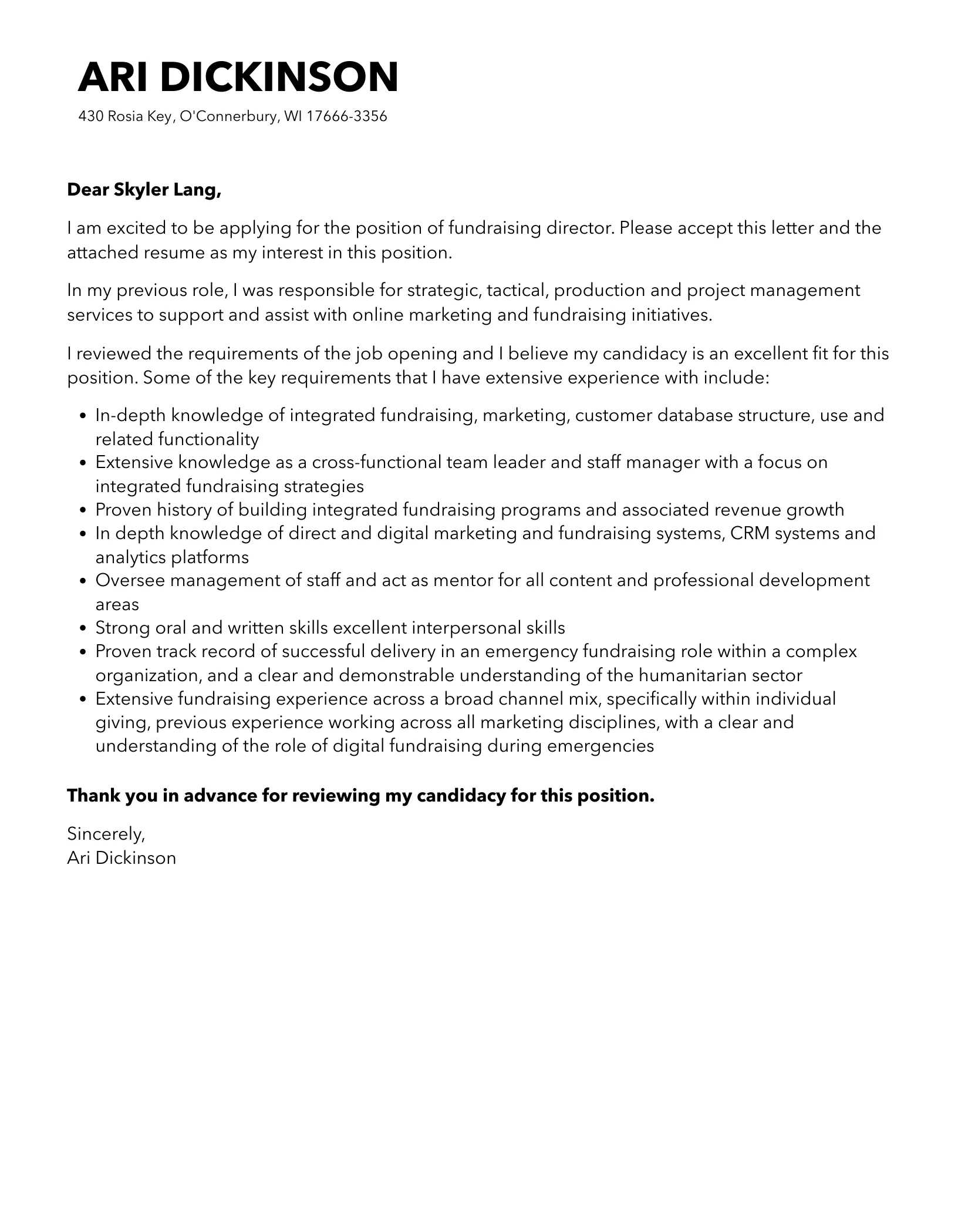What is a Fundraising Cover Letter?
A fundraising cover letter is a crucial document used by non-profit organizations, charities, and other entities to solicit donations from individuals, corporations, or foundations. It serves as a formal introduction, providing context for the fundraising appeal and persuading the recipient to contribute financially. This letter complements other fundraising materials, such as proposals or brochures, and is tailored to the specific needs of the organization and the target audience. A well-crafted cover letter can significantly increase the chances of securing donations and achieving fundraising goals. Effective cover letters explain the need, highlight the impact of donations, and express gratitude, fostering a connection between the organization and the potential donor.
Why a Fundraising Cover Letter is Important
The importance of a fundraising cover letter stems from its ability to personalize the fundraising request and make a compelling case for support. It’s often the first impression a potential donor has of your organization, and a well-written letter can set the tone for a positive relationship. It provides an opportunity to explain the organization’s mission, share stories of impact, and demonstrate transparency regarding the use of funds. A cover letter allows you to address specific concerns, tailor the message to the recipient, and create an emotional connection that inspires giving. In essence, it’s a powerful tool for building trust, generating interest, and ultimately securing the financial resources needed to fulfill the organization’s mission. A great fundraising cover letter should reflect organization’s values and vision to the donors.
Key Components of a Fundraising Cover Letter

A comprehensive fundraising cover letter includes several key components that work together to create a persuasive appeal. These components ensure the letter is well-structured, professional, and resonates with the potential donor. It is important to remember that each section serves a specific purpose, contributing to the overall effectiveness of the letter. By focusing on these core elements, organizations can maximize their chances of securing donations and achieving their fundraising goals. Remember to always tailor your cover letter to the specific donor.
Contact Information
Your contact information, including your organization’s name, address, phone number, and email address, should be at the top of the letter. This allows the recipient to easily contact you with questions or to send their donation. Ensure this information is accurate and up-to-date to avoid any potential confusion or delays in communication. Including your website address can also provide the recipient with an opportunity to learn more about your organization.
Date
The date the letter is written is typically placed just below your contact information. This helps the recipient understand when the letter was sent and can be useful for record-keeping purposes. The date should be formatted consistently, for example, month/day/year. Ensure the date is accurate as it indicates the timeliness of the fundraising appeal.
Recipient’s Details
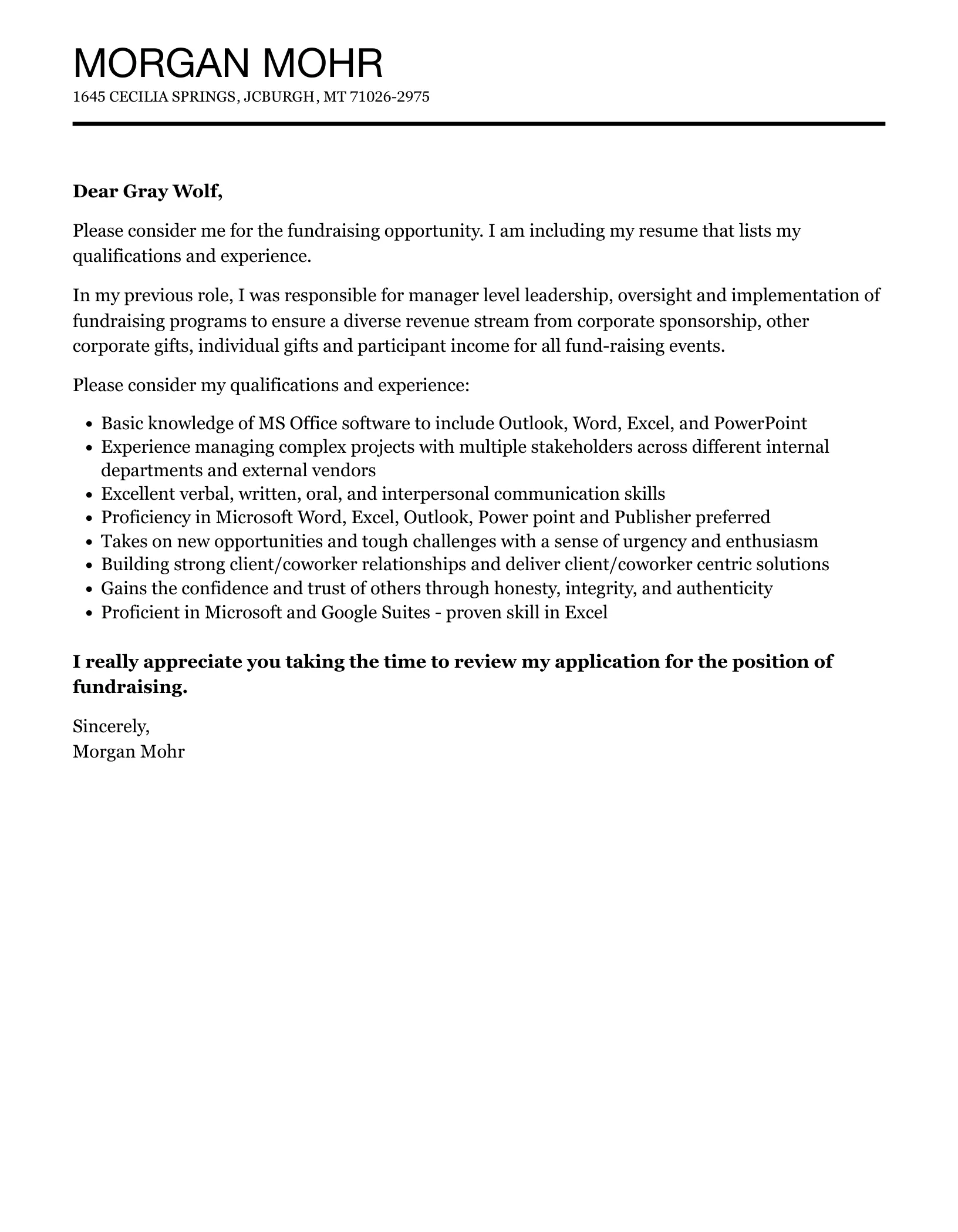
Properly addressing the recipient is crucial for creating a personalized and respectful impression. Include the recipient’s name, title, and address. If possible, address the letter to a specific person rather than using a generic salutation like “Dear Sir/Madam.” This level of personalization demonstrates that you’ve taken the time to research the recipient and their potential interest in your cause.
Salutation
Use a professional salutation, such as “Dear Mr./Ms./Dr. [Last Name],” or “Dear [Recipient’s Name].” If you don’t know the recipient’s name, you can use a more general greeting, such as “Dear Friend.” Avoid overly informal language to maintain a professional tone. The salutation sets the stage for the rest of the letter and should create a positive first impression. Make sure you spell the name correctly, as this shows respect.
Body of the Letter
The body of the cover letter is where you make your case for support. It should be organized logically and compellingly to capture the recipient’s attention and persuade them to donate. The body typically consists of an introduction, body paragraphs, and a call to action. Each section serves a specific purpose, and together they create a clear and persuasive message.
Introduction Paragraph
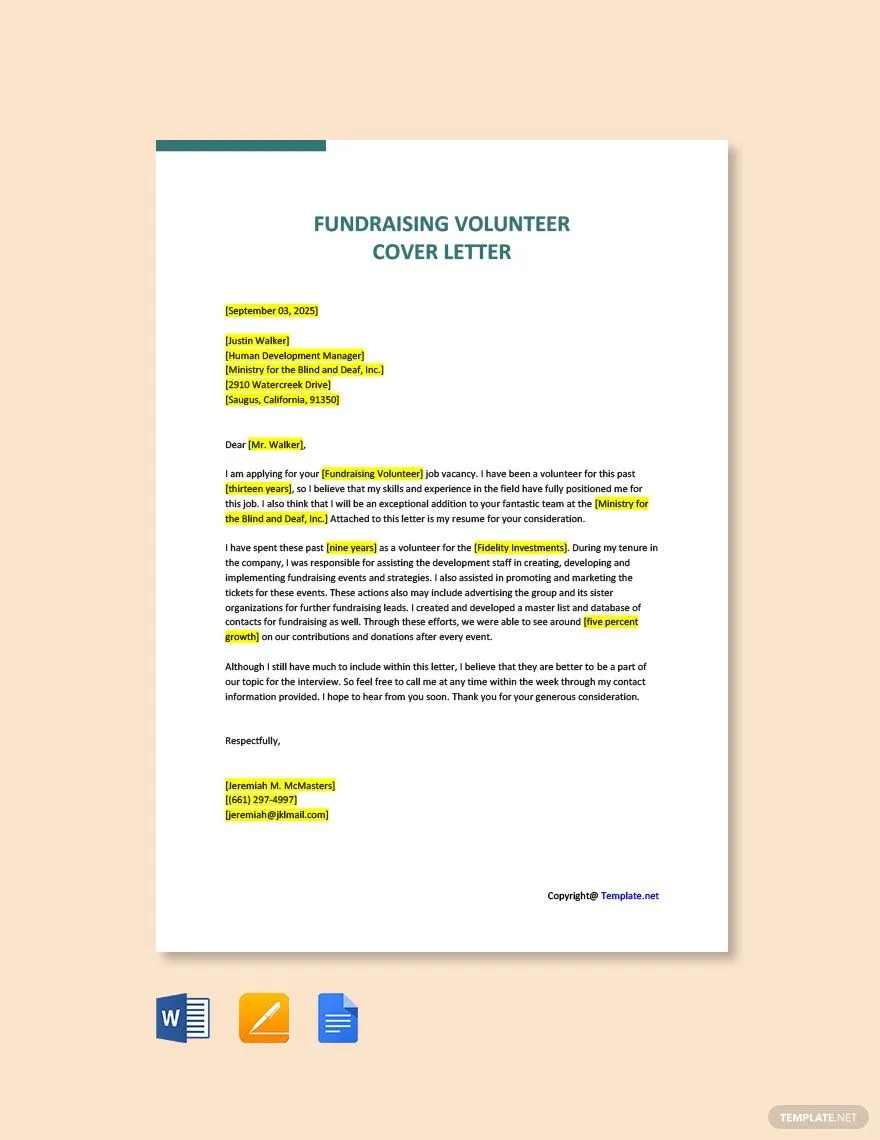
The introduction should immediately capture the reader’s attention and clearly state the purpose of the letter. Briefly introduce your organization and its mission. If you know the recipient, mention any connection you may have to them or why you chose to reach out to them specifically. This initial paragraph sets the tone for the rest of the letter and encourages the reader to continue reading.
State the Purpose
Clearly and directly state the purpose of the letter: to request a donation. Be upfront and honest about your need for financial support. Avoid being vague or beating around the bush. A direct statement shows respect for the recipient’s time and demonstrates that you value their potential contribution. The purpose should be clear from the start to avoid any confusion about the letter’s objective.
Highlight Your Organization’s Mission
Briefly explain your organization’s mission and the impact it has on the community or cause you serve. This helps the recipient understand what you do and why your work is important. Use concise and engaging language to describe your mission. Highlight the core values and goals of your organization to resonate with the recipient. Explain the positive change your organization brings to the world, this helps build trust and rapport.
Body Paragraphs
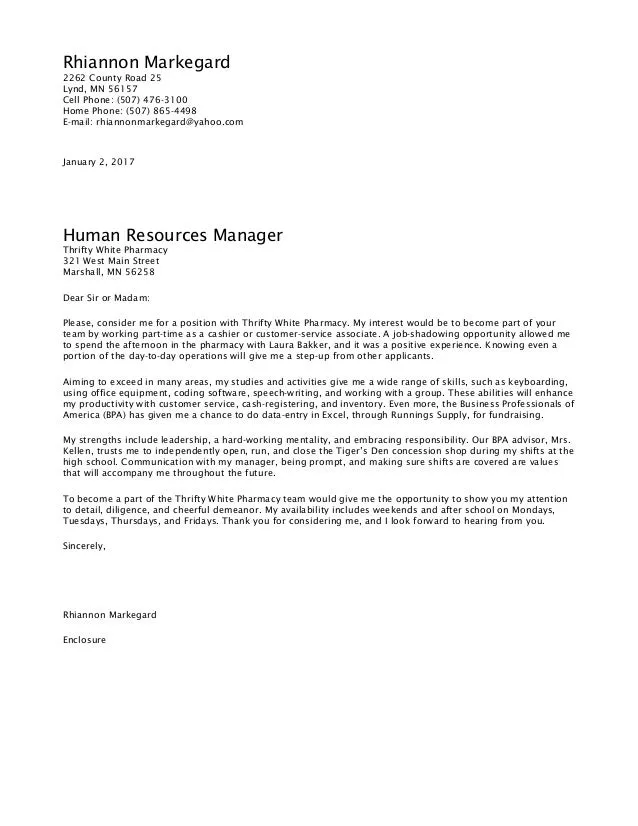
The body paragraphs should provide detailed information about your organization’s work, the specific need for funds, and the impact of donations. Use compelling language and concrete examples to illustrate your points. These paragraphs are where you build your case, persuade the recipient, and demonstrate the value of their contribution. Consider using storytelling and testimonials to connect with the reader emotionally.
Explain the Need
Clearly explain why you need financial support. Describe the specific programs, projects, or initiatives that require funding. Be specific about the challenges you face and the impact of these challenges. This could include a description of the individuals or communities your organization serves and the problems you are trying to solve. Transparency is key, so provide enough information to help the donor understand the context of the fundraising campaign.
Describe Your Fundraising Goal
Outline your specific fundraising goal, including the amount of money you are trying to raise and how it will be used. If possible, break down the goal into specific projects or programs. Be transparent about how the funds will be allocated and the impact the donations will have. This shows the recipient the purpose behind the fundraising appeal. Provide a detailed budget or plan to provide additional transparency.
Show Impact
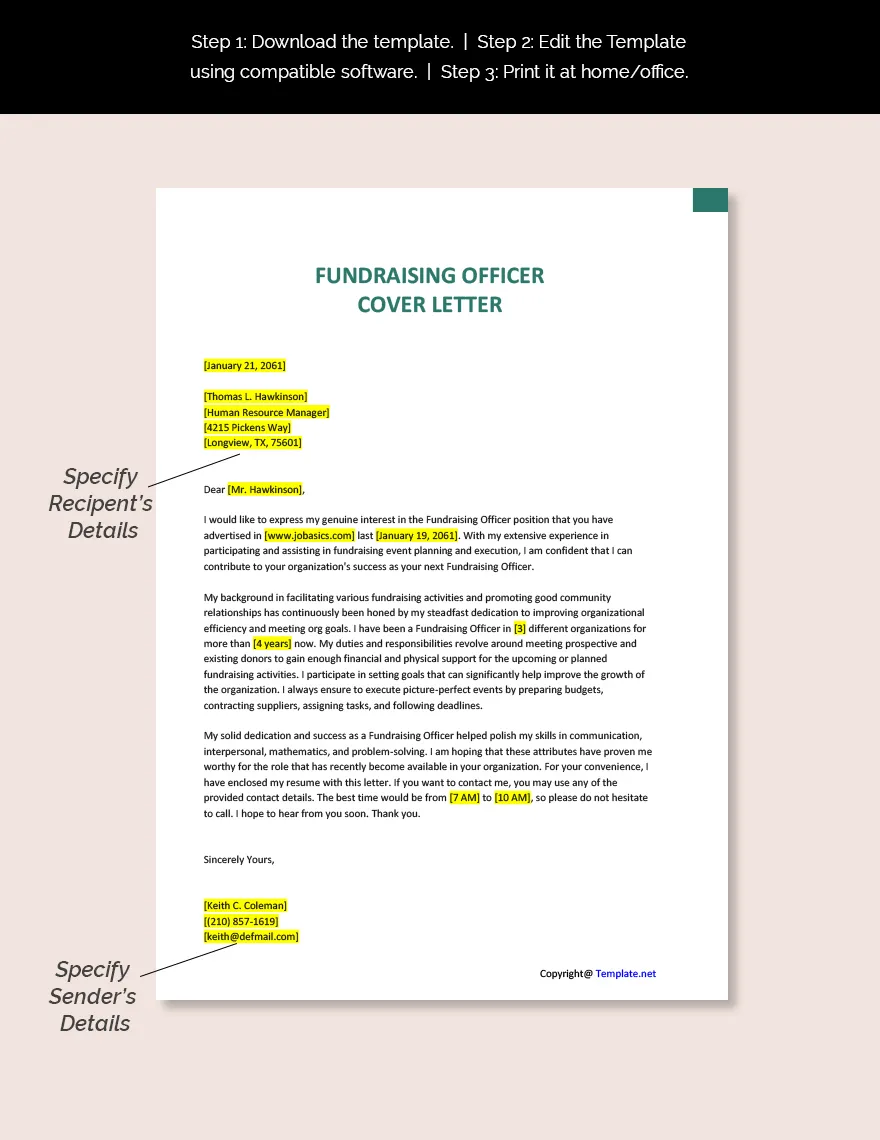
Illustrate the impact of donations by providing concrete examples and stories of how your organization has made a difference. Use statistics, testimonials, and case studies to demonstrate the positive outcomes of your work. Show how donations will contribute to your mission. Show the real-world results of your work. This will help the recipient understand the tangible benefits of supporting your organization. Show the difference each donation can make.
Call to Action
The call to action is a clear and direct request for a donation. Tell the recipient what you want them to do, whether it’s donating online, mailing a check, or attending an event. Provide specific instructions on how to donate, including the website address or mailing address. Make it easy for the recipient to give. Set a deadline for the donation, if applicable, to create a sense of urgency. Express gratitude for their consideration and offer further information if needed.
Closing and Signature
Thank the recipient for their time and consideration. Reiterate your appreciation for their potential contribution. Include a professional closing, such as “Sincerely,” or “With Gratitude.” Sign the letter with your name and title. If you’re sending a physical letter, sign it by hand. If sending an email, ensure your signature includes your contact information and organization name.
Formatting and Style
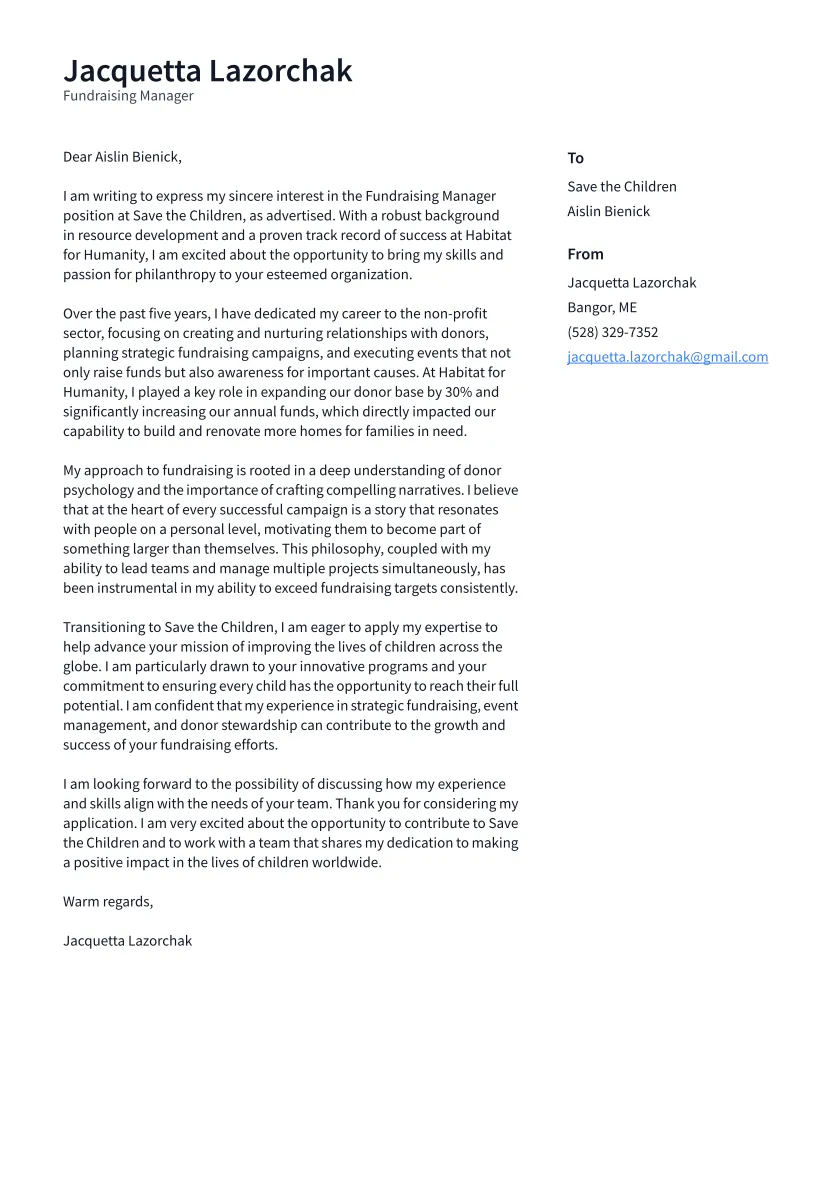
The formatting and style of your fundraising cover letter can greatly impact its effectiveness. A well-formatted and visually appealing letter is easier to read and reflects positively on your organization. Attention to detail in terms of font, spacing, and proofreading helps ensure your message is clear and professional. Adhering to these formatting guidelines can significantly improve the readability and persuasiveness of your fundraising cover letter.
Font and Size
Choose a professional and easy-to-read font, such as Times New Roman, Arial, or Calibri. Use a font size of 11 or 12 points for the body of the letter. Ensure the font size is appropriate for readability, as this will make it easier for the recipient to read the letter. Avoid using overly decorative or distracting fonts. Maintain consistency throughout the letter.
Margins and Spacing
Use standard margins (typically 1 inch on all sides) to create a clean and organized layout. Use single spacing within paragraphs and double spacing between paragraphs. Proper spacing enhances readability and prevents the letter from appearing cluttered. Avoid excessive use of bolding or underlining, as it can be distracting. Use white space effectively to make the letter visually appealing.
Proofreading
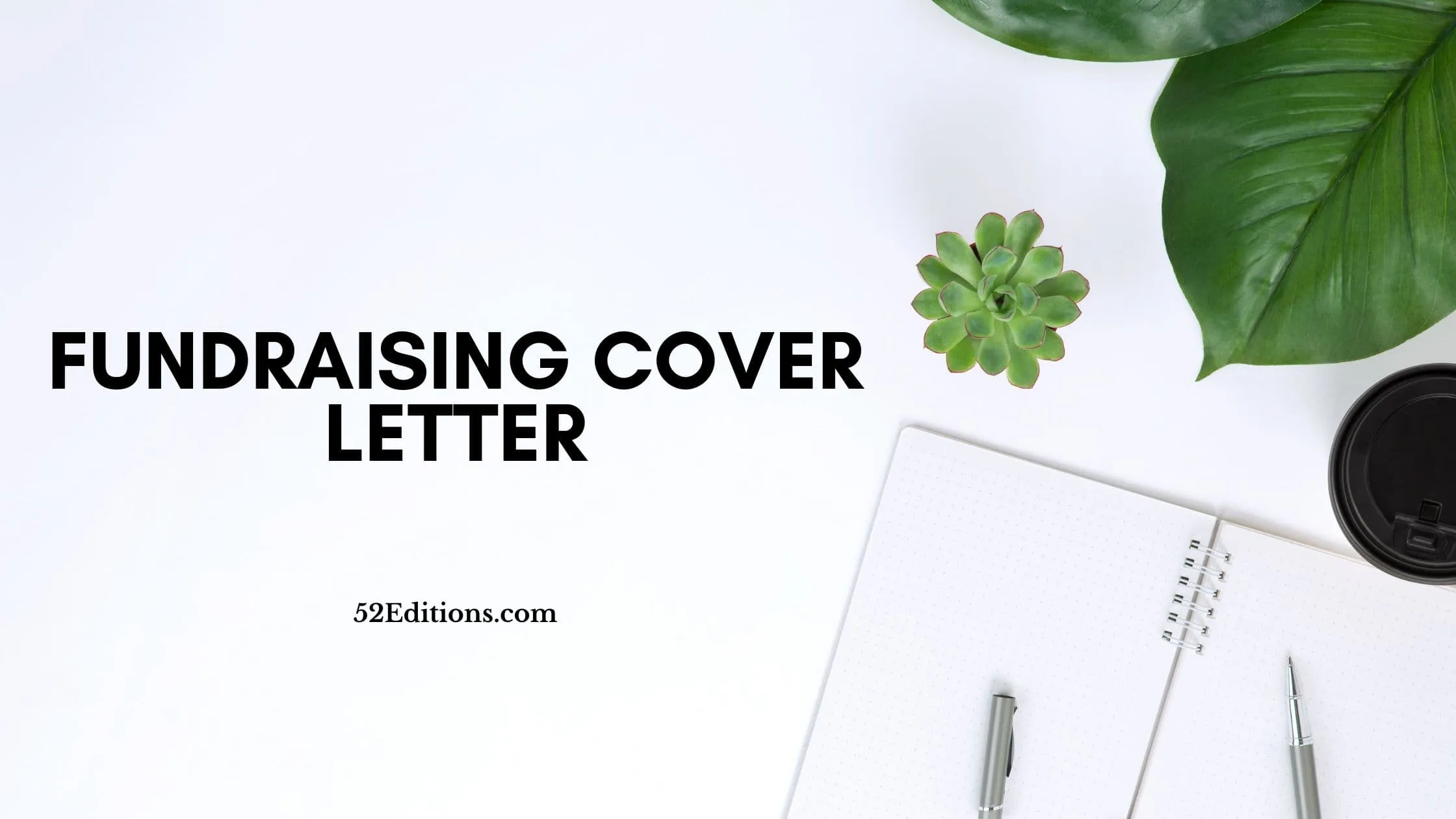
Carefully proofread your letter for any spelling, grammar, or punctuation errors. Errors can undermine the credibility of your organization. Have someone else review the letter as a fresh pair of eyes can often catch mistakes you might miss. Verify all details, including names, titles, addresses, and dates. Ensure your letter is free of errors before sending it. This demonstrates professionalism and attention to detail.
Fundraising Cover Letter Sample Template
While a fundraising cover letter is a unique document, it helps to have a standard template to structure your letters. Include the key elements. This provides a foundation for a professional and effective appeal. You can find templates online. Many organizations provide templates to help guide the creation of cover letters. Use these templates as a starting point and customize them to fit the specific needs of your organization and the target donor. Remember to tailor the content to match the specific fundraising campaign and donor. Never copy a template verbatim.
Where to Find More Fundraising Cover Letter Samples
There are numerous resources available where you can find examples of fundraising cover letters. These examples can provide inspiration, guidance, and insight into different approaches. Non-profit organizations often publish samples of successful fundraising materials. Several websites offer free sample cover letters for download. Consulting different samples can help you understand the range of styles. Adapting the samples to fit your needs is important, so do not copy them.
Tips for Writing a Successful Fundraising Cover Letter
Writing a successful fundraising cover letter requires attention to detail, careful planning, and a clear understanding of your goals. These tips can help you create a more persuasive and effective letter. Remember that a well-crafted cover letter can significantly increase your chances of securing donations and meeting your fundraising goals.
Keep it Concise and Engaging
Keep your letter concise and to the point. Respect the recipient’s time by avoiding unnecessary length. Focus on the most important information, such as your mission, the need for funds, and the impact of donations. Use clear, concise language and avoid jargon. Maintain an engaging tone that captures the reader’s attention. Use storytelling, anecdotes, or testimonials to make your message memorable.
Personalize the Letter
Personalize each cover letter to the recipient whenever possible. Address the letter to a specific person and mention any connection you have to them. Show that you understand the recipient’s interests, values, or previous giving history. Tailor the message to fit the recipient’s potential interest in your cause. Personalization makes the letter more meaningful and shows the recipient that you value their potential contribution.
Follow Up
Follow up with the recipient after sending the cover letter. This can be a phone call, an email, or another letter. A follow-up demonstrates that you are serious about your request and appreciate their consideration. Thank them for their time and reiterate the importance of their potential donation. A follow-up may provide additional information or address any concerns. It is a crucial step in securing donations.
Final Thoughts
Writing a compelling fundraising cover letter is an essential part of successful fundraising. By following these guidelines and incorporating your organization’s unique voice and mission, you can create a letter that resonates with potential donors and encourages them to support your cause. Remember to be transparent, grateful, and authentic in your communication. A well-crafted cover letter can be the key to unlocking financial support and achieving your organization’s goals. Remember to always proofread your work before sending the letter out to donors.
